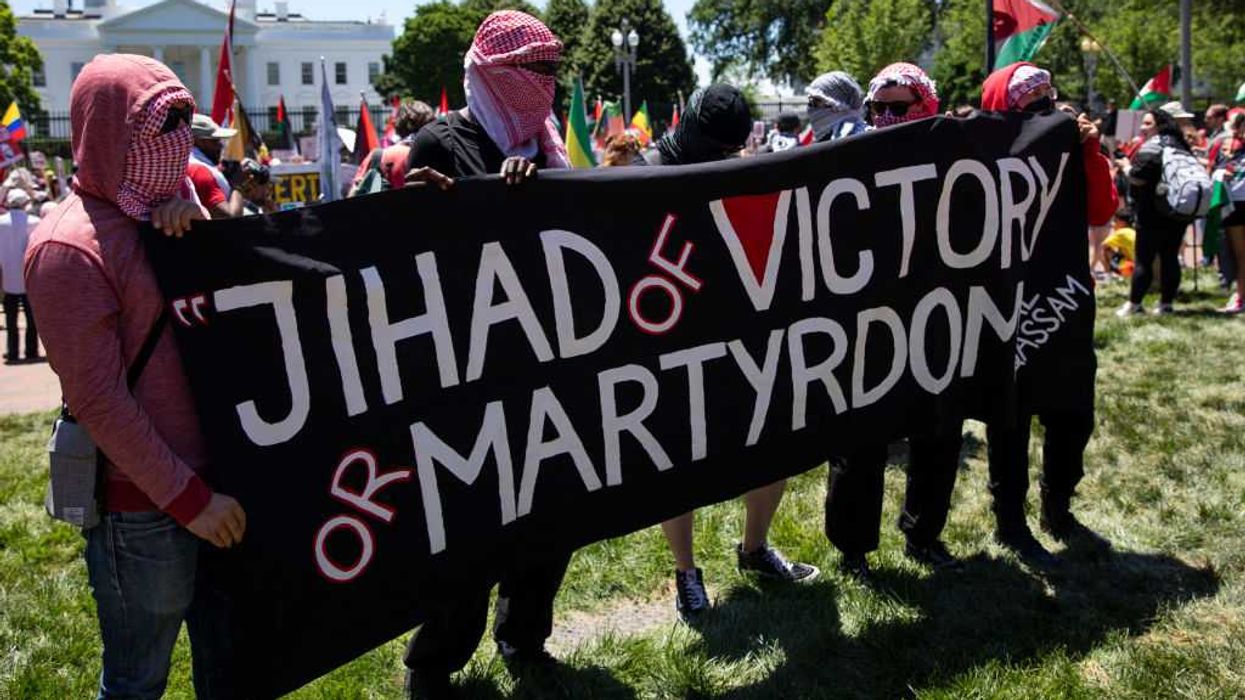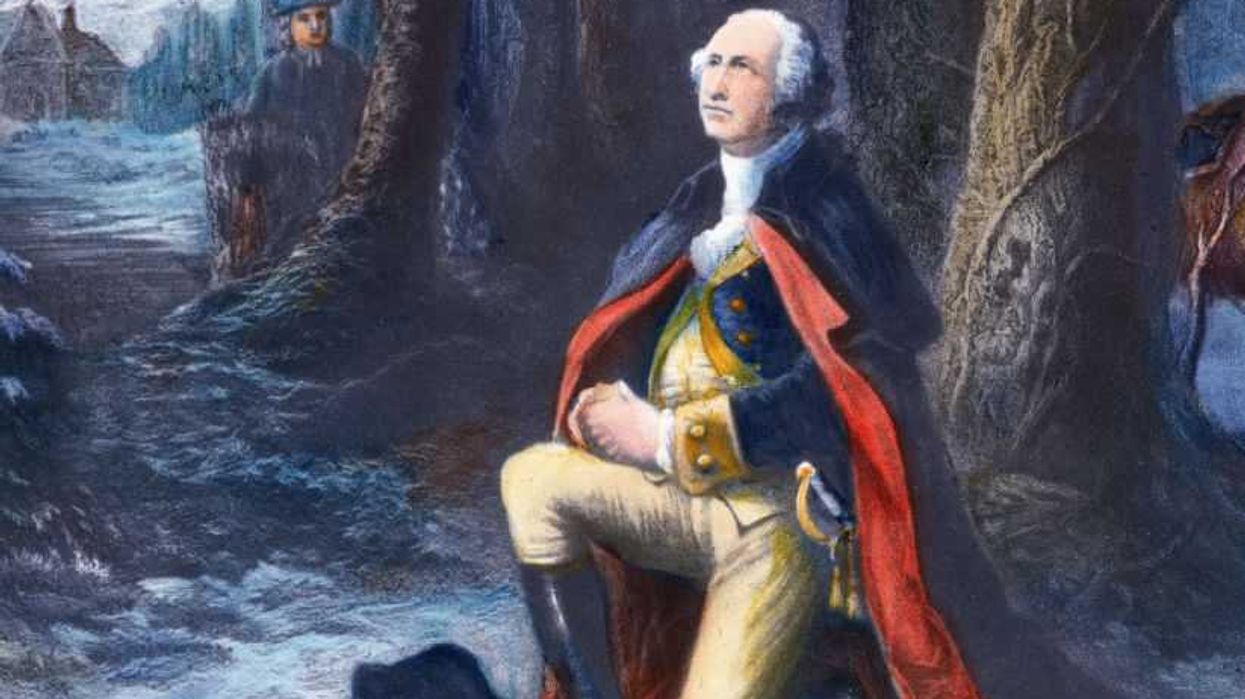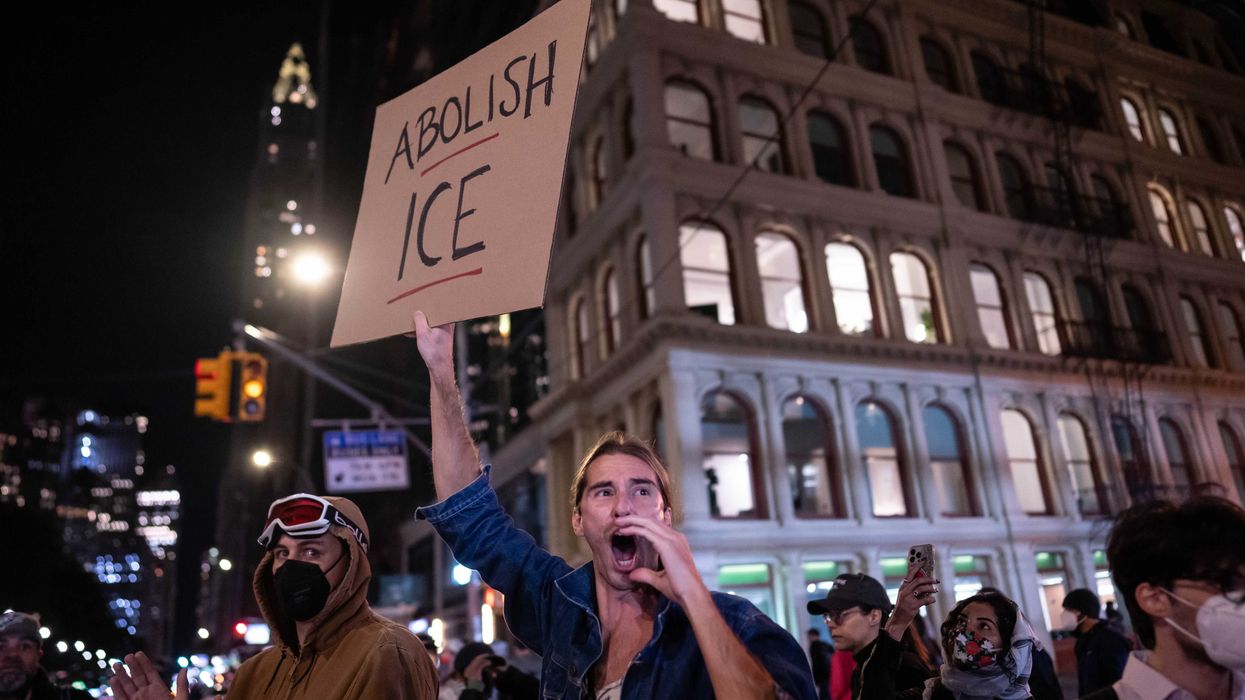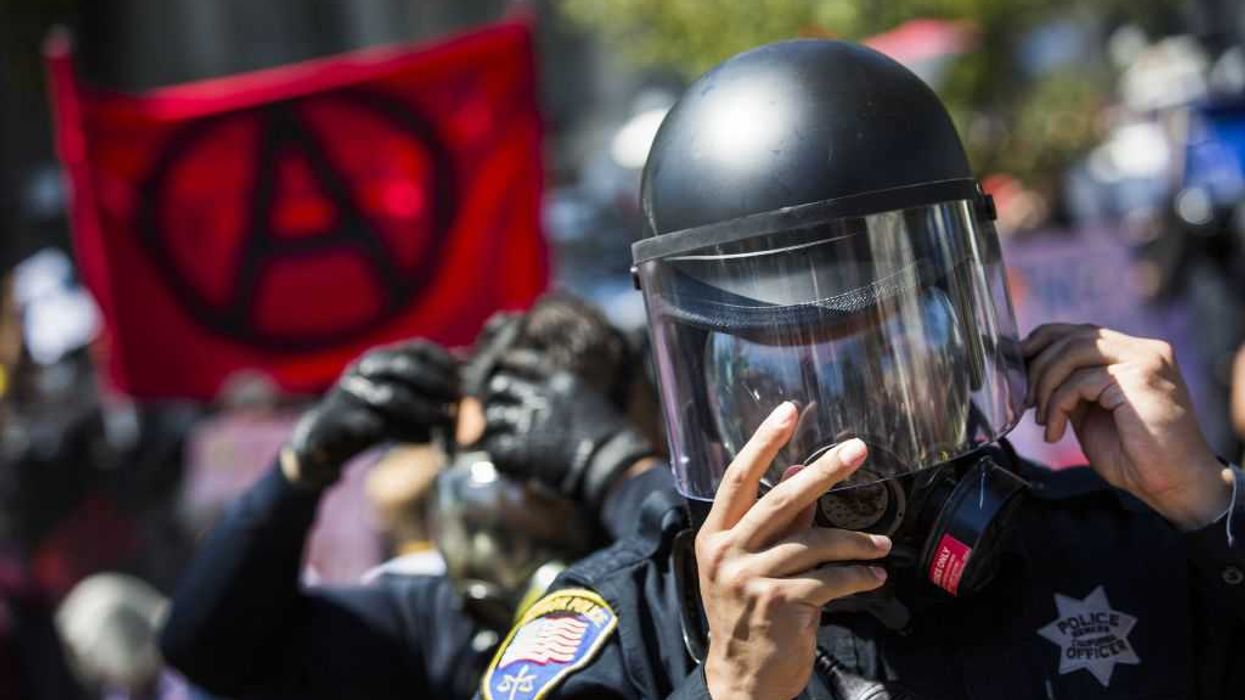In 1965, Lyndon Johnson announced his War on Poverty initiative, a sweeping vision of government intervention to provide all manner of welfare to those in need. Today, America has over 70 welfare programs to aid the poor and has spent $22 trillion on the so-called War On Poverty. One would think such massive resources and efforts would have eradicated --- or greatly lessened --- poverty in America. Instead, the poverty rate, which was 14 percent in 1965, has increased to 14.3 percent. In this four-part series, we explore the failed War on Poverty and how more government is never the answer.
Listen to the Full Series on the War on Poverty:
War on Poverty Part I: The Founders' Thoughts
While living in Europe during the 1760s, Benjamin Franklin observed that the more public provisions made for the poor, the less they provided for themselves and the poorer they became. On the contrary, the less done for them and the more they did for themselves, the richer they became.
Many have completely lost sight of that simple truth. Instead, when it comes to helping the poverty stricken, the common refrain for government intervention is to do what the Bible says or what Jesus would do. But here's what Jesus actually said while addressing the rich man claiming to obey every commandment since his youth:
And Jesus said unto him, if thou will be perfect, go and sell that thou hast and give unto the poor, and thou shall have treasure in heaven, and then come and follow me. (Matthew 19:21)
It's vital to note that Jesus told the man to sell what he had and give it directly to the poor. He didn't say, go and pay your taxes and hope that Caesars will redistribute your wealth properly to those who need it. Jesus never mentioned the government had any role in taking care of the poor. It was for individuals to do. Our Founding Fathers held the same belief.
The Founders made no mention of the federal government caring for the poor. That responsibility was left to the individual, families, churches, and if need be, local governments. Assistance was to be temporary, minimal and only on the condition of work. In other words, the poor would have to work for the welfare they received, if they were able-bodied. Franklin also said the government should assist the poor in overcoming poverty as expediently as possible. He famously said, "I think the best way of doing good to the poor is not making them easy in poverty, but leading or driving them out of it."
The Founders were concerned about taxpayers' money being spent properly, something that no longer concerns members of our government. The Founding Fathers had not been supportive of an income tax. In fact, Thomas Jefferson denounced the idea of income taxation in his first inaugural address saying, "A wise and frugal government shall not take from the mouth of labor the bread it has earned."
In 1779, Thomas Jefferson proposed a bill that outlined his approach to welfare. He suggested group homes with work requirements for the able-bodied and raising local funds to support poor children and the lame, impotent, blind and other inhabitants who couldn't take care of themselves.
The left often portrays our Founders as uncaring, hateful and callous because of the principles they held on government welfare. However, the results of their philosophies cannot be denied. The poverty rate at the nation's founding in 1776 was 90 percent. The rate before massive government intervention had plummeted to 14 percent. It's one of the greatest success stories in the history of mankind.
There's no denying the Founding Principles of personal responsibility, coupled with freedom, opportunity and capitalism, brought great prosperity to this nation and lifted millions of out of poverty.
War on Poverty Part II: The Great Depression
The United States of America changed the world. The American experiment, launched by its Founders, revolutionized how the world viewed personal freedom, government, business, culture, commerce --- everything. It set an example for liberty that captured the world's envy and imagination. In short, the American experiment worked.
It worked so well that the poverty rate went from 90 percent in colonial America to 14.3 percent today. Some would argue the War On Poverty lowered that rate and not American exceptionalism. They would be wrong. The poverty rate before Lyndon Johnson and the Welfare Act was actually lower than today --- 14 percent.
Naturally, there were bumps along the way, including a few major ones like 1929 and The Great Depression, when the financial house of cards collapsed and an overinflated stock market plunged. For the majority of America, it meant interminable lines outside factory gates, hunger and a march of the unemployed on the nation's capitol. Practically overnight, an economic blizzard swept the world.
During the crash of 1920, the hands-off policies of President Harding's administration allowed the free market to correct itself and send America into the Roaring Twenties. In 1929, there was a completely different approach.
Government intrusion and welfare programs increased exponentially after Franklin Roosevelt's election in 1932. Rather than help end the depression, his actions actually deepened it. Americans who had seen tough times before had never seen anything like this.
In 1932, the situation became so dire that 3,000 unemployed workers marched on the Ford plant in Dearborn, Michigan. It was the same Ford plant that a decade before had doubled workers' pay. Working at the Ford plant was so prestigious throughout the decades prior that a job there was a status symbol. In 1932, 3,000 unemployed and struggling workers were attacked by Dearborn police and Ford's company guards, who killed four and injured many more.
In March of that same year, FDR signed the Emergency Baking Act into law and the FDIC was born. He also ordered the nation off the gold standard. Then came the Civilian Conservation Corp, the Federal Emergency Relief Action, the National Industrial Recovery Act, the National Labor Board, the Tennessee Valley Authority, the Glass-Steagall Act, the Soil Erosion Service, the Civil Works Administration, Works Progress Administration, the Wagner National Labor Relations Act and the Social Security Act --- all by 1935.
Much more government intervention was to come, but no relief. In fact, things actually got worse.
By 1937, five years after FDR took office, the percentage of Americans living in poverty had hit 45 percent. That same year, frustrated and beaten down workers at Republic Steel's south Chicago plant and their families tried to combine a picnic with a rally and demonstration. Chicago Police moved in and opened fire on the crowd. Ten people were killed and a dozen more wounded in what is now called the Memorial Day Massacre.
The Great Depression stretched on throughout the 1930s and into the '40s, with rationing and shortages until America's war machine geared up enough to finally overcome the joblessness and stagnation. By most estimates, the Depression lasted 13 years. Yet, millions of Americans continue to revere FDR, including former NBC anchor Tom Brokaw who called FDR a "demigod" in his household.
War on Poverty Part III: The Great Society
In 1965, Lyndon B. Johnson declared "unconditional war on poverty in America," launching The Great Society that altered social programs of The New Deal. According to Johnson, The Great Society asked "not how much, but how good."
Perhaps "how much" was the greater question because the answer was $22 trillion --- and counting. The Cato Institute estimates an additional $48 trillion in unfunded liabilities from Medicare alone.
Today, Medicare, Medicaid and FDR's Social Security program account for 47 percent of all federal spending. That's almost $1.8 trillion annually. And the total amount of America's unfunded liabilities are said to be in excess of $125 trillion --- more than twice the amount of all money in the world today.
Was it worth it? LBJ said "not how much, but how good." So how good was it? Sadly, the poverty rate is higher today than in 1965.
LBJ proposed many initiatives to launch his War on Poverty:
• An educational program to ensure every American child had the fullest development
• A massive attack on crippling and killing diseases
• A national effort to make the American city a better and a more stimulating place to live
• Increase the beauty of America and end the poisoning of rivers and air
• A new program to develop regions of the country suffering from distress and depression
• New efforts to control and prevent crime and delinquency
• Elimination of every remaining obstacle to the right and the opportunity to vote
• Honor and support the achievements of thought and the creations of art
• An all-out campaign against waste and inefficiency
According to one source, his vision was to help the disadvantaged help themselves, hoping that an education equaled opportunity, and the chance to come into the mainstream of American middle class economic life.
However, even in his own party, some were not convinced that his efforts were effective, including Senator Robert F. Kennedy who said, "If we learned anything in the last summer and over -- in the last 30 years, what we've been doing hasn't been the answer. It's been helpful. But what we've been doing has not been the answer. And we can't just be doing the same thing that we've been doing for the last three decades and hope that eventually all these problems are going to disappear."
Regardless, LBJ kept pumping out the programs, preparing bill after bill, funds for education --- elementary, secondary, college and Head Start for preschool children --- funds for conservation, clean air, clean rivers, highway beautification, national parks, consumer protection, truth in labeling and packaging, automobile safety, urban renewal and housing, public television, creation of the National Endowment for the Humanities and the Arts --- the list goes on and on.
Part of the LBJ War on Poverty initiative included bringing about social and racial justice --- equal rights for blacks. His efforts helped create the impression that Democrats were the ones fighting for minorities and Republicans were the racist corporation cronies. This, despite the fact that Republicans had freed slaves and fought along with black Americans for civil rights. LBJ, on the other hand, had fought against civil rights the first 20 years of his political career, including opposing President Harry S. Truman's proposals against lynching and segregation and interstate transportation. Johnson called the proposed civil rights program a farce and a sham.
No one knows what was in Lyndon Johnson's heart at the time, but being as he was incredibly opportunistic and ambitious as the nation began to demand civil rights for blacks, his position changed. Democrats have reaped the benefit of that change ever since.
By the early '90s, studies were showing that rather than eradicating poverty, The Great Society was eradicating families --- and that trend has worsened ever since.
War on Poverty Part IV: Abusing the System
The War On Poverty is an unmitigated failure. The United States has gone from 26 million people on food stamps in 2007 to more than 47 million today. The cost of the program has gone from $33 billion to $77 billion. It has become so flawed that the Wall Street Journal reported millions are now legally entitled to collect food stamps as long as they have little or no monthly income. Thirty-five states have abolished asset tests for most food stamp recipients. These and similar paperwork reduction reforms advocated by the USDA are turning the food stamp program into a magnet for abuses and absurdities. Furthermore, according to the Journal, the Obama administration is far more enthusiastic about boosting food stamp enrollment than about preventing fraud. And there is fraud --- a lot of it.
When looking at American poverty, one might expect poor people to be on food stamps --- the homeless, the drug addicted, the perpetual scammer --- not people with jobs, living in suburbia. One woman interviewed in a documentary received $750 each month from the food stamp program while making $70,000 annually, allowing her to purchase filet mignon and steaks. As she noted, it was easy to apply, so she took advantage. She also had a $9,000 breast augmentation while on food stamps.
So how good has the war on poverty been for American families? In 1960, just 9 percent of children lived in a single parent home. By 1980, there were more than 6.2 million families headed by a single woman, making up 19.4 percent of all families with children. By 1990, that number had risen to 84 million families, or 24.2 percent of the total. Today, that number sadly is at 34 percent.
Blacks have been hit especially hard. At the beginning of World War II, the illegitimate birthrate among black Americans was slightly less than 19 percent. In 1965, near the start of the Great Society, the rate of unwed births for blacks was 25 percent. Beginning in the late 1960s, the trend rapidly accelerated, reaching 49 percent in 1975 and 65 percent in 1989. Today, it is 72 percent. Nearly three-quarters of all black families are now single parent.
Fewer than half, just 46 percent of US children younger than 18, of all races, are living in a home with two married heterosexual parents in their first marriage. This is a marked change from 1960, when 73 percent of children fit this description.
Back in the early '90s, the University of Washington showed that an increase of roughly $200 a month in welfare benefits per family correlated with a 150 percent increase in the illegitimate birthrate among teens.
There is one important caveat: Poverty in America is generally very different from poverty elsewhere in the world. According to the government's own surveys, 80 percent of poor households have air-conditioning. Nearly, two-thirds have cable or satellite television. Half have a personal computer. Forty percent of America's poor have a wide screen HD television. Three-quarters own a car or a truck. And nearly a third have two or more vehicles. Ninety-six percent of poor parents state that their children have never been hungry at any time during the last year because they could not afford food. And 82 percent of all poor adults reported that they too were never hungry at any time in the prior year.

 AASHISH KIPHAYET / Contributor | Getty Images
AASHISH KIPHAYET / Contributor | Getty Images
 Harold M. Lambert / Contributor | Getty Images
Harold M. Lambert / Contributor | Getty Images Adam Gray / Stringer | Getty Images
Adam Gray / Stringer | Getty Images Anadolu / Contributor | Getty Images
Anadolu / Contributor | Getty Images